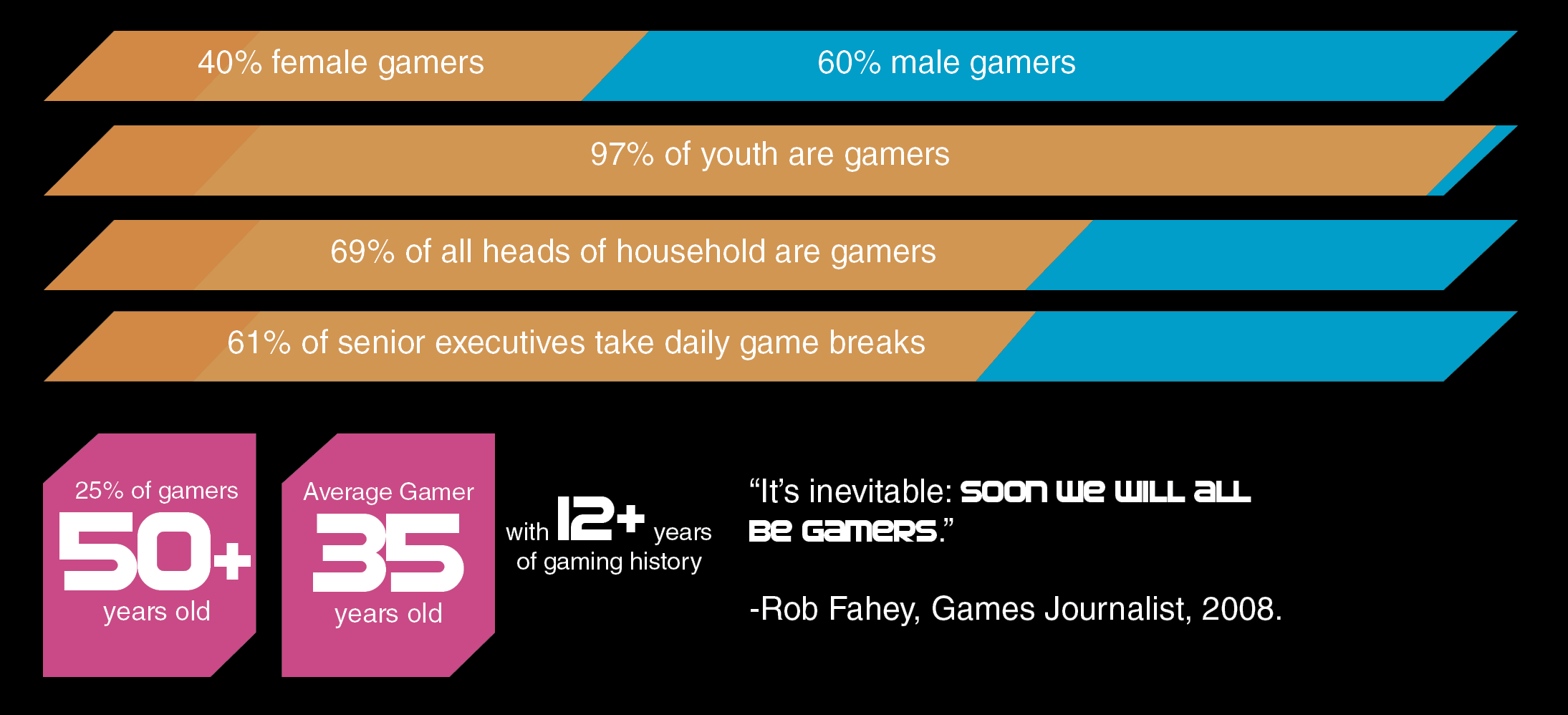
Master of Architecture Thesis Project
University of Hong Kong
2013
As technology continues to progress further and further, more and more individuals are exposed to video games. Whether it’s a hardcore game of Call of Duty, or a short, simple smartphone minigame such as Angry Birds - people of all ages play video games. At the most extreme, gamers become so dedicated that they spend countless hours in these virtual environments, paying no attention to the physical world. Although the obvious solution is to steer away from these games entirely, what if they could be used for positive purposes instead? Why are these people so immersed in these games in the first place? What is it that the games have -- or rather -- what is it that the real world is missing?
Game designer Jane McGonigal argues that games offer rewarding experiences that fulfill “genuine human needs that the real world is currently unable to satisfy.” These are carefully designed tasks which reward the player for their efforts - encouraging the player to play more. Their variability and difficulty are moderated so that the player is motivated to go on, no matter how difficult the task - a sort of perserverance that is not easily attainable in real life. McGonigal is currently on a mission to design games that do just that - but with more purposeful functions than just having fun.
Where McGonigal is working on the psychological solution, this thesis examines what we as architects can do as an architectural response to the issue. How do you design a space as engaging as one would experience in a video game? How do you program the rewards and responsive nature of a video game into a physical space? The goal is not to design an architecture which stores games (or even one large game), but to design an architecture that is the game.



Prototype Tower
The Protoype Tower serves as the architectural response to bringing video game design to a real-life place. Though this particular version has no real site, the tower is expected to be placed in the heart of a busy city center, bringing in the energy of play where it is lacking most. The program is designed around that of a game - players must progress up the tower, going through four distinct levels which gradually increase in difficulty, teaching players different sets of skills. A special “boss battle” - sort of like a midterm exam - randomly occurs within the break levels which separate the main levels. These spaces also serve as the containers for the services and amenities of the building such as washrooms, restaurants, etc. The quality of these services is proportional to their height in the building, giving players incentive to progress further up the tower, as only players with cleared scores are able to access the higher levels of the building.
Like a dungeon in an MMO, each level is adjusted to match the skill level of the players which play in it. This adjustment could be translated to speed, frequency, and difficulty of tasks placed throughout each level. For example, a higher-difficulty Level Four game could mean higher frequency of boulders, less chances to switch between spirals, and less frequent break areas to allow players to rest. These difficulty settings are automatically set via each player’s ID card which record their progress. Players with higher levels cards and more archievements are awarded with access to better quality services and amenities.
The structure of the tower consists of a simple steel frame which is supported by six hexagonal concrete columns. At the core of the steel frame is the central axl - a gigantic steel shaft which acts as not only structure, but also the core of the building’s dynamic systems. On some levels, the steel shaft rotates, driving other gears in the level and allows for continuous controlled movement. Speed and frequencies of each indivudal component is handled by a gear system - like that found in a common manual transmission car. As the structure in each level is drastically different, the Break levels act as transitions for the unevenly distributed load forces. Each break level is a heavily reinforced hexagonal steel frame with cross-braced faces.
Since the goal of the thesis is to design a real-life space with video game inspirations and NOT an actual video game, existing kinetic technology is used. This means that both the conception and realization of the project is definitely possible. Nothing “unreal” from the video game world is faked and placed into the design of the building.












